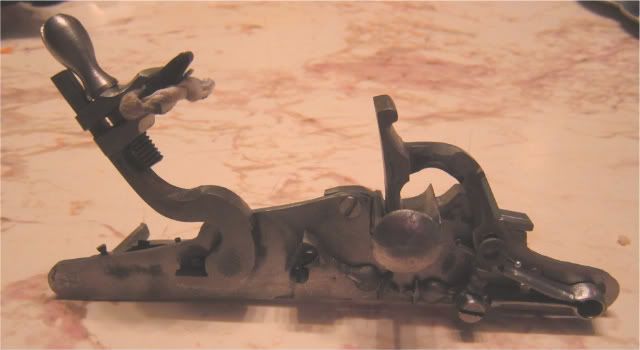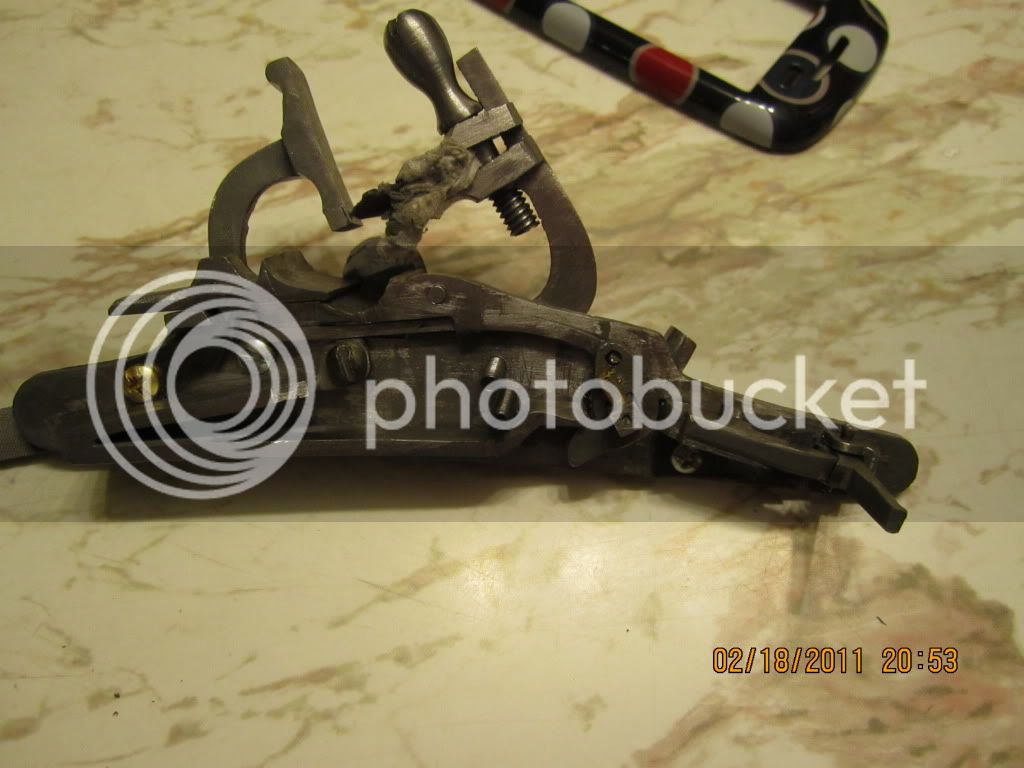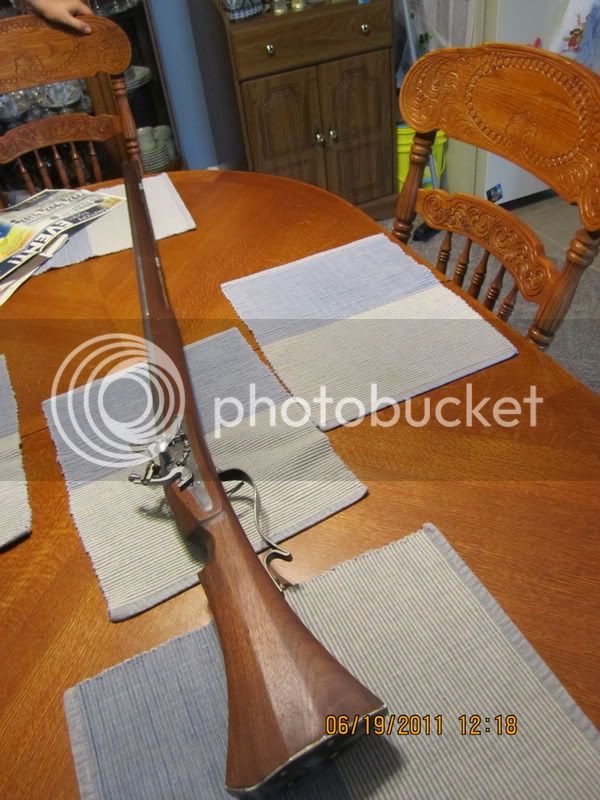-
This community needs YOUR help today. We rely 100% on Supporting Memberships to fund our efforts. With the ever increasing fees of everything, we need help. We need more Supporting Members, today. Please invest back into this community. I will ship a few decals too in addition to all the account perks you get.

Sign up here: https://www.muzzleloadingforum.com/account/upgrades -
Friends, our 2nd Amendment rights are always under attack and the NRA has been a constant for decades in helping fight that fight.
We have partnered with the NRA to offer you a discount on membership and Muzzleloading Forum gets a small percentage too of each membership, so you are supporting both the NRA and us.
Use this link to sign up please; https://membership.nra.org/recruiters/join/XR045103
You are using an out of date browser. It may not display this or other websites correctly.
You should upgrade or use an alternative browser.
You should upgrade or use an alternative browser.
Pilgrim's Muskets
- Thread starter Asher
- Start date

Help Support Muzzleloading Forum:
This site may earn a commission from merchant affiliate
links, including eBay, Amazon, and others.
Last edited by a moderator:
Carteret Kid
45 Cal.
- Joined
- Aug 31, 2004
- Messages
- 684
- Reaction score
- 132
Nice looking work. What caliber and barrel length?
There is an outstanding artical titled "John Thompsons Pilgram Long Gun" in Volume 33, No.4, 2011 in Man at Arms magazine, for the Gun Collector. This piece appears in nearly every colonial arms history book there is. The artical is very detailed and has excellent pictures of the in and outside of the lock dispelling that it was ever converted from a snaphunce. There is also shown some similar locks. If you are intent on early 17th century locks as i am, I suggest finding and reading this. G.S. 
G.S., thanks for citing that article. I'll have to find a copy.
Gulielmus Smith said:There is an outstanding artical titled "John Thompsons Pilgram Long Gun" in Volume 33, No.4, 2011 in Man at Arms magazine, for the Gun Collector. This piece appears in nearly every colonial arms history book there is. The artical is very detailed and has excellent pictures of the in and outside of the lock dispelling that it was ever converted from a snaphunce. There is also shown some similar locks. If you are intent on early 17th century locks as i am, I suggest finding and reading this. G.S.
Thanks for that reference.............now all I gotta do is remember which box I put the 2011 issues in.

- Joined
- Jun 4, 2020
- Messages
- 152
- Reaction score
- 174
The term bastard musket in 1630 was that they were not in Kings gauge or caliber which was 75 cal .In other words a Bastard musket is not standard caliber and not of standard length .Does bastard refere to rough finish or to un known origin ?Good post by the way .
To find what the Pilgrims used for guns, I looked at my copy of the book, "THE MAY-FLOWER & HER LOG", by Azel Ames, M.D., © 1901.
Appearently the doctor couldn't find the May-Flower's Book of Lading listing arms, however he did present a section in the book about the guns and armament they took on the voyage.
On page 227 he writes,
"The arms and accouterments (besides ordanance) of the May-Flower Pilgrims, known on the authority of Bradford and Winslow to have been brought by them, included muskets ("matchlocks"), "snaphances" (flintlocks), armor ("corslets," "cuirasses," "helmets," "bandoliers," etc.) swords, "curtlaxes" (cutlasses), "daggers," powder, "mould-shot, "match" (slow-match for guns), "flints," belts, "knapsacks," "drum," "trumpet," manacles," "leg-irons," ec., ec. Pistols" (brass) appear in early inventories, but their absence in the early hand-to-hand encounter at Wessagussett indicates that none were then available, or that they were not trusted...
Josselyn gives the equipment he considers necessary for each man going to New England to settle:--
"Armor compleat:-
One long piece [musket] five feet or five and a half long.
One Sword.
One bandoleer.
One best.
Twenty pounds of powder.
Sixty pounds of shot or lead, pistol and Goose-shot."
Another list gives an idea of "complete armor:" -
"Corselet
Breast [plate or piece]
Back [ditto]
Culet (?)
Gorget [throat-piece].
Tussis [thigh-pieces].
Head-piece" [morion skull-cap]."
Bradford states that they used their "curtlaxes" (cutlasses) to dig the frozen ground to get at the Indians' corn, "having forgotten to bring spade or mattock."..."
The book then moves on to describe the ship's ordnance.
The parenthesis and brackets in the above quote were used by the author in the book. They are not my interpretations of what the article is.
Appearently the doctor couldn't find the May-Flower's Book of Lading listing arms, however he did present a section in the book about the guns and armament they took on the voyage.
On page 227 he writes,
"The arms and accouterments (besides ordanance) of the May-Flower Pilgrims, known on the authority of Bradford and Winslow to have been brought by them, included muskets ("matchlocks"), "snaphances" (flintlocks), armor ("corslets," "cuirasses," "helmets," "bandoliers," etc.) swords, "curtlaxes" (cutlasses), "daggers," powder, "mould-shot, "match" (slow-match for guns), "flints," belts, "knapsacks," "drum," "trumpet," manacles," "leg-irons," ec., ec. Pistols" (brass) appear in early inventories, but their absence in the early hand-to-hand encounter at Wessagussett indicates that none were then available, or that they were not trusted...
Josselyn gives the equipment he considers necessary for each man going to New England to settle:--
"Armor compleat:-
One long piece [musket] five feet or five and a half long.
One Sword.
One bandoleer.
One best.
Twenty pounds of powder.
Sixty pounds of shot or lead, pistol and Goose-shot."
Another list gives an idea of "complete armor:" -
"Corselet
Breast [plate or piece]
Back [ditto]
Culet (?)
Gorget [throat-piece].
Tussis [thigh-pieces].
Head-piece" [morion skull-cap]."
Bradford states that they used their "curtlaxes" (cutlasses) to dig the frozen ground to get at the Indians' corn, "having forgotten to bring spade or mattock."..."
The book then moves on to describe the ship's ordnance.
The parenthesis and brackets in the above quote were used by the author in the book. They are not my interpretations of what the article is.
Last edited:
- Joined
- Jun 4, 2020
- Messages
- 152
- Reaction score
- 174
The gun in question started out as Matchlock it was crudely converted To an english lock locally when who knows I have Personally seen it up-close it is a very interesting old gun . As far as the pilgrims having early flintlocks in 1620s&30s if they did have any it was very few indeed .Infact the Plymouth colony the standard musket remained the matchlock untill 1691 when the colony was merged with the Massachusetts bay colony by King William and became apart of the New Province of the Massachusetts Bay under Direct Royal control with A Royal Governor appointed by the King.It was then that the new English Doglocks began To appear in enough Numbers to Replace the old matchlocks by the early 1700s Not the King Philips war .That tragic event 90%+ percent of the firearms used by the colonial Militia were matchlocks .The provenance of the NRA's alleged Mayflower gun is exceedingly murky, and there has been no scholarly analysis of the artifact that I know of. Just sayin'.
.
The first muskets were extra large and musket shooters were often placed on the flank at this time with pike man usually stuck between.
I wonder if this break down wasn’t reflecting that.
The big match lock muskets placed the flanks of a force Using lighter easier to handle ‘new styles’ snaphaunce.
A few decades later the English civil war was still fought with flanking matchlock muskets and a mainline of pikemen.
It was still as slow to fire as any ml arm but had the battlefield postion of a SAW today, namely protecting the flank and covering advances.
I wonder if this break down wasn’t reflecting that.
The big match lock muskets placed the flanks of a force Using lighter easier to handle ‘new styles’ snaphaunce.
A few decades later the English civil war was still fought with flanking matchlock muskets and a mainline of pikemen.
It was still as slow to fire as any ml arm but had the battlefield postion of a SAW today, namely protecting the flank and covering advances.
Light, since the first muskets were very large, a bastard was half musket, or military fusil thenDoes bastard refere to rough finish or to un known origin ?Good post by the way .
- Joined
- May 24, 2005
- Messages
- 4,959
- Reaction score
- 4,326
Another lock that could qualify in this Thread would be the variations of Scandinavian style snaplocks. These remained popular in a variety of areas in Europe. I remember reading reading that similar locks have been excavated in North America. Overall, the gun looks and holds like a full size matchlock musket. In this case, the pan cover has to be manually moved to expose the priming powder before firing. A carry over from the matchlock.
It's interesting to note all the lock experimentation that went on between about the last quarter of the 16th and first half of the 17th Centuries.
Rick


It's interesting to note all the lock experimentation that went on between about the last quarter of the 16th and first half of the 17th Centuries.
Rick


Col. Batguano
75 Cal.
- Joined
- Feb 10, 2011
- Messages
- 5,034
- Reaction score
- 1,407
Man, this thread is almost as old as the arms represented in pictures here!
- Joined
- Feb 28, 2019
- Messages
- 2,942
- Reaction score
- 3,662
Well Its maybe an old thread but is a most interesting one. Oddly no one seems to mention a Caliver which Ide call a much lighter handier version of the old full musket and is today & likely in its day the most usual variant for E C W & the 17th in general requiring no rest . The English lock has many varients but broadly goes from simple full cock & Dog catch then varios half & full options then more 'Modern' flint lock looking exterier but still a more refined internal lateral scear often incorporating the ' steel' ( read ' battery','.hammer,' or' frizzen' if you prefer ) feather spring internally . Whether the Caliver would come under "Smaller shoots " being inferior to full musket, same bore just lighter and loaded less so it didn't in one writers enthusiastic view " Doth murder more be it far or nere and better cheap " All good stuff regardless .
Rudyard
Rudyard
What that era be too early for the English to refer to it as a 'bastard bore'?Whether the Caliver would come under "Smaller shoots " being inferior to full musket, same bore just lighter and loaded less ...
- Joined
- Feb 28, 2019
- Messages
- 2,942
- Reaction score
- 3,662
I'me sorry I cant understand what you mean. If its' wouldn't instead of What' Ide say its all the same mid/ either end of mid 17th c If full muskets exceed the' 10 standing 12 rowling fower foote Barrel' specs .They must be rare birds as Ive never come across an example but Calivers the lighter cousin same specs do survive in numbers .The author of that little piece about the merits of big musket versus '.smaller shoots' presumably the caliver & like lighter pieces seemed to be championing the heavy muskets . He may be correct but I bet he didn't have to carry one !.
Regards Rudyard
Regards Rudyard
what is your point? why are your reading it?if you don't like it move on to one that you like. as stated most of us enjoy it. jmho.Man, this thread is almost as old as the arms represented in pictures here!
Belleville
32 Cal.
- Joined
- Feb 19, 2005
- Messages
- 291
- Reaction score
- 226
"A little web search says that the Pilgrims brought 10 matchlock muskets and 50 snap-haunce muskets with them when they arrived in 1620. " My research does not support this statement. Can anyone provide primary documentation to support this and the date?
A 1630 list shows "80 bastard or short muskets with snaphaunces 4 foot in the barrel without rests", see 2nd reference below?
Reference:
https://www.pilgrimhall.org/pdf/Arms_Armor_of_Pilgrims.pdfFirearms in Plymouth Colony
A 1630 list shows "80 bastard or short muskets with snaphaunces 4 foot in the barrel without rests", see 2nd reference below?
Reference:
https://www.pilgrimhall.org/pdf/Arms_Armor_of_Pilgrims.pdfFirearms in Plymouth Colony
Similar threads
- Replies
- 23
- Views
- 1K
- Replies
- 26
- Views
- 2K
Latest posts
-
-
-
-
Very stuck minie ball, tried everything having to pull the breech plug
- Latest: PathfinderNC
-
-
-
-
-
-






